As the spring approaches and ambient temperatures start to rise, red mite in hen houses across the land will be stirring ominously. So it’s important to start taking action now!

At its most fundamental level, dealing with red mite involves first realising that the problem even exists. Although this may sound ridiculously obvious, you’d be surprised how many keepers remain blissfully unaware they have an infestation, even when their birds are actually dying as a result.
Part of the problem is obviously the size of these pests; they are tiny. Then, couple this with the fact that, typically, they only operate at night, and choose to spend the daylight hours hidden away out of sight, and you can start to appreciate how they might be missed by the more inexperienced keepers.
But failing to spot their presence can be a costly mistake, especially if they’re allowed to continue breeding unchecked. Infestation levels can be reached alarmingly quickly, at which point life inside the house at night starts to become truly excruciating for your chickens.
Spotting trouble
But even the name ‘red mite’ is a little deceptive as, most of the time, these tiny creepy-crawlies aren’t red at all. Their natural colour is an unassuming beige-grey, and it’s only after they’ve had a good feed that they turn a blood-red colour. This, of course, is because they’re actually full of blood, having feasted on a bird as it roosts quietly at night.
Esta historia es de la edición April 2017 de Practical Poultry.
Comience su prueba gratuita de Magzter GOLD de 7 días para acceder a miles de historias premium seleccionadas y a más de 8500 revistas y periódicos.
Ya eres suscriptor ? Conectar
Esta historia es de la edición April 2017 de Practical Poultry.
Comience su prueba gratuita de Magzter GOLD de 7 días para acceder a miles de historias premium seleccionadas y a más de 8500 revistas y periódicos.
Ya eres suscriptor? Conectar
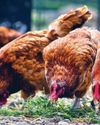
Growing food for Chickens
Mary Larham explores some crops to grow on your holding…
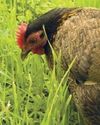
Poultry in the garden – the truth!
Jo-Jane Buxton shares her experiences

The British Waterfowl Association
Which came first, the goose or the egg?

WHY FIT A FAN IN AN INCUBATOR?
Brinsea Products, the Incubation Specialists explain the difference between still air and forced draught
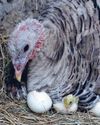
Incubating turkey eggs
Janice Houghton-Wallace looks at broody turkeys and artificial incubation

Chicken nesting box herbs
Diana Clauss owns The Blue Feather Farm, in St Cloud, Florida, home to chickens, ducks, goats, and Anatolian Shepherd dogs.
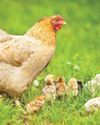
Incubate in January?
Jessica Wombwell says plan the breeding
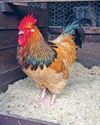
Andy's DIARY
Andy emphases the importance of keeping out damp and wet but allowing ventilation even in cold weather
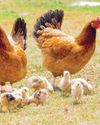
Feeding for Breeding
It may be winter, but as Joanna Palmer, nutritionist for Smallholder Range explains, now’s the time to get your flock in tiptop shape and plan ahead for a successful breeding season next spring.

A chick named Cuckoo raised by a duck!
Chris Hammacott and her husband live on a small croft in the Outer Hebrides, they keep a ‘no kill’ flock or rare and rescue sheep which they use to spin and weave rugs. They also share the 8 acres with hens, ducks, cats and 9 rescue pugs.